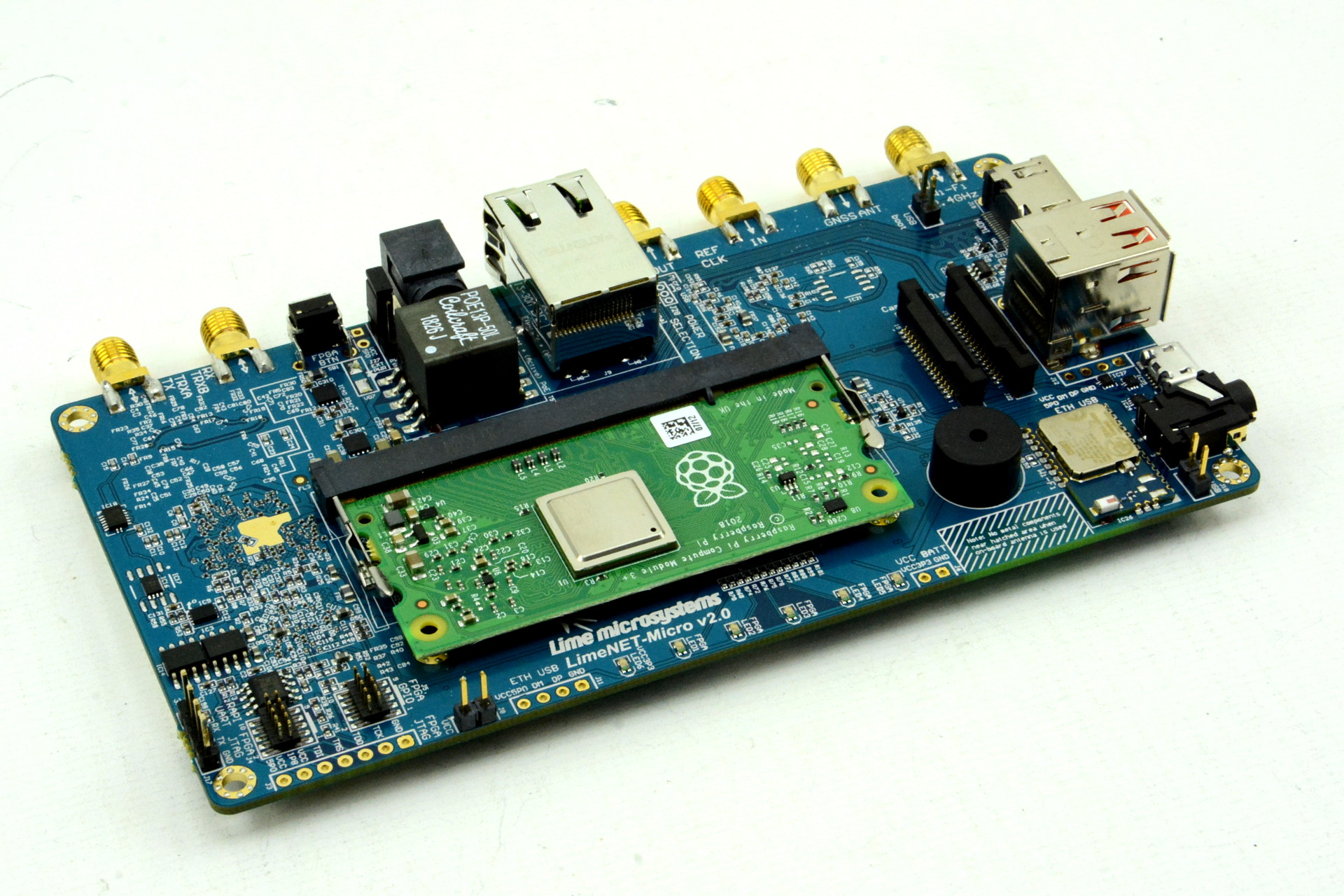As with existing integrated LimeNET platforms, the new LimeNET Micro is built on the very same revolutionary field-programmable RF (FPRF) technology and features the LMS7002M transceiver at its heart. However, this highly cost-optimised, single board solution also integrates GPS for high-accuracy timing, Power-over-Ethernet (PoE), and embedded compute for fully standalone operation.
In utilising the Raspberry Pi Compute Module 3, LimeNET Micro builds on previous platforms to further democratise wireless networks in much the same way that the Raspberry Pi has democratised embedded computing.
Given its incredibly low price point and highly integrated nature, there are endless application possibilities for LimeNET Micro, ranging from cellular networks and IoT, through spectrum monitoring, test and measurement, amateur radio, and radio astronomy.
Example Use Cases
- Inexpensive enterprise and personal networks
- Rural, autonomous, and resilient networks
- Universal IoT communications hubs
- Rapid deployment infrastructure for emergency response
- Remote radio solutions for amateur radio and radio astronomy
- Integration into application-specific RF appliances
- Radio spectrum survey
- Passive wireless geolocation
- PHY and security research
- RF-aware robotics
Features & Specifications
- RF transceiver: Lime Microsystems LMS7002M
- FPGA: Intel Altera MAX 10 (10M16SAU169C8G)
- 169-pin FBGA package
- 16K LEs
- 549 KB M9K memory
- 2,368 KB user flash memory
- 4 x fractional phase locked loops (PLLs)
- 45 x 18×18-bit multipliers
- 130 x general purpose input/output (GPIO)
- Single supply voltage
- Flash feature
- FPGA configuration via JTAG
- GNSS module: u-blox NEO-M8Q-0-10
- Supports BeiDou, Galileo, GLONASS, GPS / QZSS
- Able to concurrently receive up to three GNSS
- –167 dBm navigation sensitivity
- EEPROM memory: 2 x 128 KB for RF transceiver MCU firmware and data
- Flash memory: 1 x 4 MB flash memory for data
- General user inputs/outputs:
- 5 x dual color (red + green) LED
- 8 x FPGA GPIO pinheader (3.3 V)
- 4 x FPGA switches
- 1 x buzzer
- Connectivity:
- 2 x coaxial RF (SMA) connectors (each can be switched between high and low frequency bands)
- SMA connector for external clock source in
- SMA connector for clock source out
- SMA connector for GNSS antenna
- Raspberry Pi Touch Screen Display Connector (ribbon cable)
- Raspberry Pi Camera (ribbon cable)
- HDMI connector
- 2 x USB 2.0 ports
- 3.5 mm audio out (Raspberry Pi Compute Module)
- FPGA GPIO headers
- FPGA JTAG connector
- RJ45 connector for Ethernet and IEEE 802.3 active Power-over-Ethernet (PoE)
- DDR2 SODIMM connector – only usable for Raspberry Pi Compute Module 3 (or Lite)
- MicroSD slot for RPi Compute Module storage
- Barrel connector for 5 V DC power
- Micro-USB for USB boot of Compute Module
- Clock system:
- 30.72 MHz OCXO: Rakon U7475LF
- GPS disciplined for high frequency accuracy and stability
- External clock input via SMA connector
- Clock output via SMA connector
- Board dimensions: 125 mm x 65 mm
